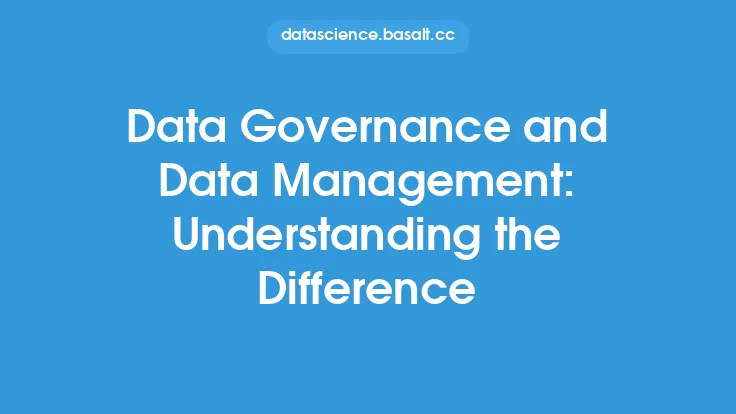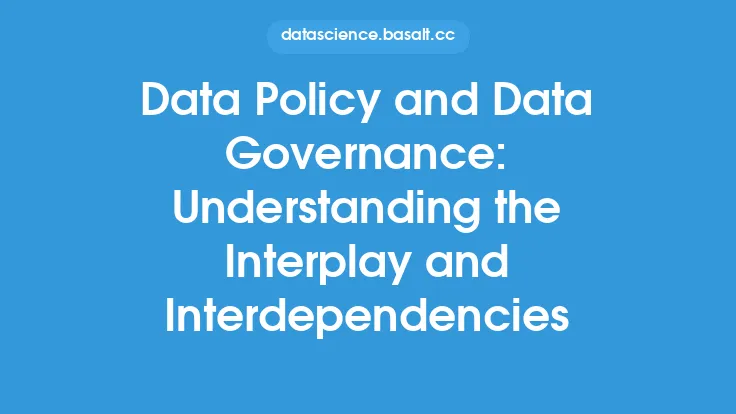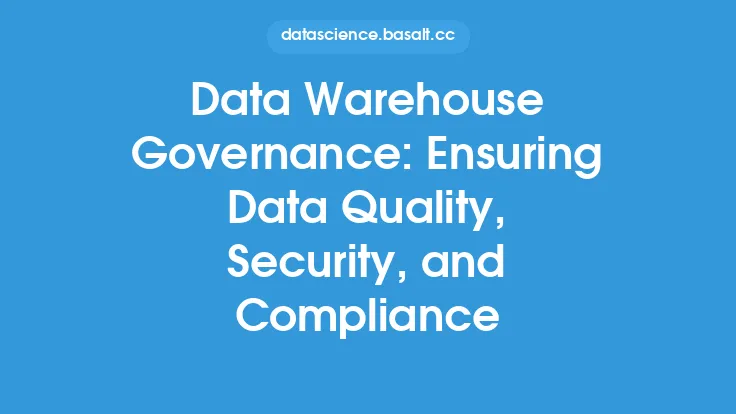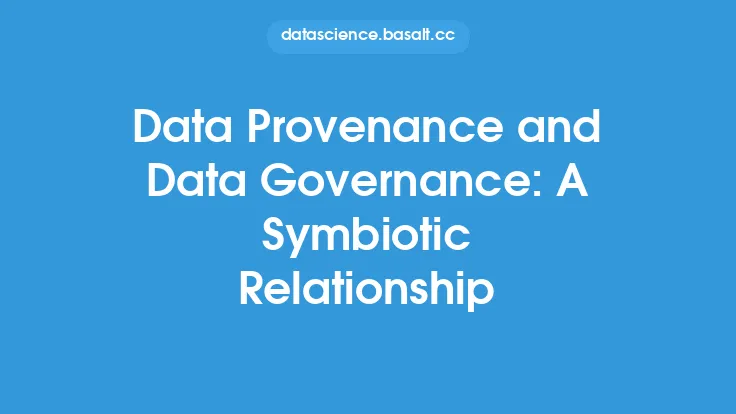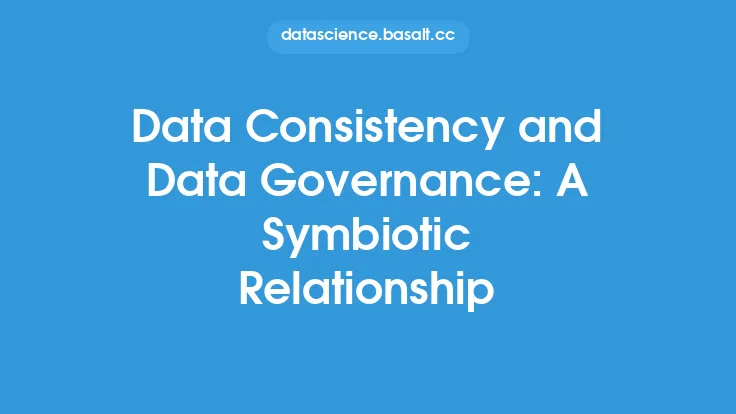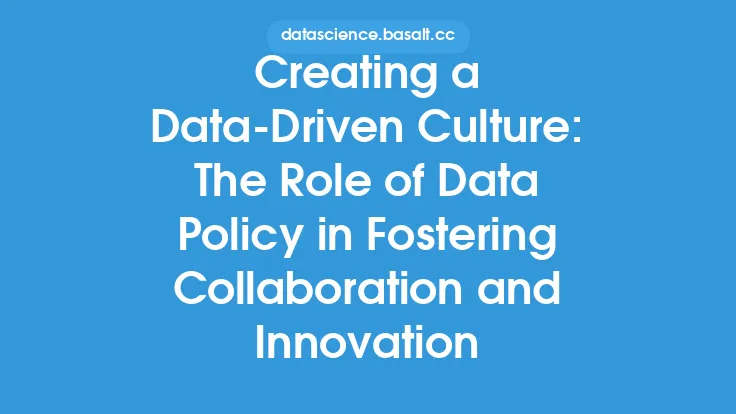Data pipeline governance is a critical aspect of data engineering that ensures the integrity, security, and reliability of data as it flows through various systems and processes. Effective governance is essential to maintain data quality, prevent data breaches, and comply with regulatory requirements. In this article, we will delve into the roles and responsibilities involved in data pipeline governance, highlighting the key stakeholders, their duties, and the best practices to follow.
Introduction to Data Pipeline Governance
Data pipeline governance refers to the set of policies, procedures, and standards that govern the management of data pipelines. It encompasses the entire data lifecycle, from data ingestion to processing, storage, and consumption. The primary goal of data pipeline governance is to ensure that data is accurate, complete, and secure, and that it is processed and delivered in a timely and efficient manner. This requires a deep understanding of the data pipeline architecture, data flows, and the various stakeholders involved in the process.
Roles and Responsibilities in Data Pipeline Governance
Several roles and responsibilities are involved in data pipeline governance, including:
- Data Owners: Data owners are responsible for ensuring the accuracy, completeness, and security of the data. They are typically business stakeholders who have a deep understanding of the data and its usage.
- Data Stewards: Data stewards are responsible for overseeing the data pipeline and ensuring that it is functioning correctly. They work closely with data owners to ensure that data is properly managed and governed.
- Data Engineers: Data engineers are responsible for designing, building, and maintaining the data pipeline. They work closely with data stewards to ensure that the pipeline is properly configured and functioning correctly.
- Data Analysts: Data analysts are responsible for analyzing the data and ensuring that it is accurate and complete. They work closely with data owners and stewards to identify data quality issues and develop solutions.
- Compliance Officers: Compliance officers are responsible for ensuring that the data pipeline complies with regulatory requirements and industry standards. They work closely with data owners and stewards to ensure that data is properly managed and governed.
Data Pipeline Governance Framework
A data pipeline governance framework is essential to ensure that data is properly managed and governed. The framework should include the following components:
- Data Governance Policies: Data governance policies outline the rules and procedures for managing data. They should include policies for data quality, security, and compliance.
- Data Standards: Data standards outline the requirements for data format, structure, and content. They should include standards for data ingestion, processing, and storage.
- Data Classification: Data classification outlines the categories of data and the corresponding security and access controls. It should include categories for sensitive data, such as personal identifiable information (PII) and financial data.
- Data Lineage: Data lineage outlines the origin, processing, and consumption of data. It should include information on data sources, processing steps, and data outputs.
- Data Quality Metrics: Data quality metrics outline the measures for evaluating data quality. They should include metrics for data accuracy, completeness, and consistency.
Best Practices for Data Pipeline Governance
Several best practices can be followed to ensure effective data pipeline governance, including:
- Establish Clear Roles and Responsibilities: Clear roles and responsibilities should be established for data owners, stewards, engineers, analysts, and compliance officers.
- Develop a Data Governance Framework: A data governance framework should be developed to outline the policies, standards, and procedures for managing data.
- Implement Data Quality Metrics: Data quality metrics should be implemented to evaluate data accuracy, completeness, and consistency.
- Conduct Regular Audits: Regular audits should be conducted to ensure that data is properly managed and governed.
- Provide Training and Education: Training and education should be provided to stakeholders on data pipeline governance and data management best practices.
Technical Considerations for Data Pipeline Governance
Several technical considerations should be taken into account when implementing data pipeline governance, including:
- Data Pipeline Architecture: The data pipeline architecture should be designed to ensure scalability, flexibility, and security.
- Data Storage and Processing: Data storage and processing should be designed to ensure data security, integrity, and availability.
- Data Ingestion and Integration: Data ingestion and integration should be designed to ensure data quality, accuracy, and completeness.
- Data Security and Access Controls: Data security and access controls should be implemented to ensure that data is properly protected and accessed.
- Data Monitoring and Alerting: Data monitoring and alerting should be implemented to ensure that data pipeline issues are quickly identified and resolved.
Conclusion
Data pipeline governance is a critical aspect of data engineering that ensures the integrity, security, and reliability of data as it flows through various systems and processes. Effective governance requires a deep understanding of the data pipeline architecture, data flows, and the various stakeholders involved in the process. By establishing clear roles and responsibilities, developing a data governance framework, implementing data quality metrics, conducting regular audits, and providing training and education, organizations can ensure that their data pipeline is properly managed and governed. Additionally, technical considerations such as data pipeline architecture, data storage and processing, data ingestion and integration, data security and access controls, and data monitoring and alerting should be taken into account to ensure that the data pipeline is scalable, flexible, and secure.
